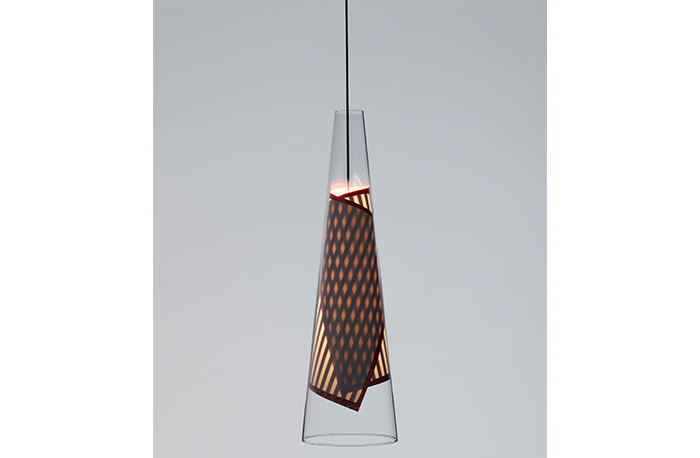Lodes and Ron Arad Cono di Luce

May 21, 2023
Lodes introduces Cono di Luce, its first collaboration with internationally renowned artist, architect and designer Ron Arad. Known for his award-winning industrial designs, the icon has had his work exhibited in prestigious institutions across the globe.
As a notable figure whose work often melds art, architecture and design, Arad’s disruptive approach consistently yields new design realms in which an object is broken out of its typical typology. With this characteristic in mind, Lodes approached the collaboration with the aim to embrace boundary-breaking challenges as part of the design process necessary to create the end product.
Before embarking on the design phase, Lodes challenged Arad to use borosilicate glass. The designer subsequently opted for a slender, truncated cone shape as the archetype, with a light source placed on top, hence its name, Cono di Luce, which translates to “cone of light.”
A continuous dialogue and exchange of ideas generated a new lighting design path that encompasses an innovative use of PCB (Printed Circuit Board). The technology was harnessed to create aesthetically pleasing qualities and the mesmerizing pattern Arad envisioned and which forms the lamp’s graphic motif.
Lodes’ technical capabilities — clearly demonstrated in the development process — enhance Arad’s intuitive and deft response to the brief. The end result mirrors Arad’s initial sketch. Cono di Luce exemplifies a technical feat brought to fruition––the design offers various functionalities.
Synonymous with Italian design, Lodes’ age-old expertise and its dedicated analytical approach yielded an innovative solution for a striking yet affordable product that offers luminosity and efficiency.
Cono di Luce is characterized by a transparent Pyrex cone that houses a printed circuit board (PCB) inside a frame — also made of PCB, yet thicker so as to provide structural support for the lamp.
The PCB interior and frame are the result of a 33-step process that involves several layers of fiberglass and copper to house the LED chip electric circuits, which by nature have both translucent and opaque areas. A sheet of fiberglass, which is extremely thin, flexible and insulating, laden with a copper path, acts as a conductor to the electrical polarity, which emits light when it reaches the LED.
Lodes’ intuition led the brand to explore the decorative potential of the material in regards to its translucency which led to the striking stripe pattern on the design, which was based on the artist’s drawing. The understanding of the material’s degree of transparency allowed Arad to play with areas of light and dark bands and to create the moiré effect through the application of overlapping stripes. Lodes employed this alluring aesthetic to design an electrical circuit connecting more than 200 LED chips.
The frame, also designed by Lodes, consists of a white rigid PCB that performs three functions — refracting light so that the luminous effect of the lamp can be uniform, connecting electric circuits that give power to the LEDs and acting as a mechanical suspension to the product itself.
Another distinctive element of Cono di Luce is the customizable frame, which not only holds the sheet placed inside the cone, but also bears the product name. The frame also details both Arad’s and Lodes’ names. Cono di Luce is available in a pendant version and in three finishes — red, gray and gold. In typical Lodes fashion, the lamp is versatile and suitable for application for a range of users and environments.
Arad prioritized the red version, offering an impactful statement piece that features the designer’s signature on the outer flap. The gray version is more subtle, with the signature and product name positioned discreetly on the inside of the sheet, which also allows the product to adapt to various settings.
In continuity with CMF Lodes, there will also be a third version that will feature a gray finish on the interior and a gold finish on the exterior, a feature obtained through the deposition of gold, giving the product a special appeal.
The result is a powerful lamp housed in a deceptively simple design. When turned on, the product reveals its full decorative capacity, showcasing an optical item made of light, shadows and superimpositions. The work is a collaboration between Arad’s creative vision and Lodes’ ability to master and manage technology.